If you’ve been anywhere near the bay recently, you will of course have noticed a dramatic increase, called a bloom, in our alien-like jellyfish invaders. On a trip recently we simply couldn’t keep up counting them and we’ve been having great fun pointing them out to the children too!
With the weather heating up and in turn warming the water, it appear to be providing perfect conditions for their food sources and encouraging more and more into the bay. This has been noticeable particularly in Torquay Harbour with the huge Barrel/Dustbin Lid Jellyfish which are hard to miss as they’re growing to giant sizes on all that lovely plankton!
So if you’re are curious to know a little more about them, here is a UK jellyfish spotters guide with a little info about each one you might see, how to identify them and most importantly – which ones to swim away from!
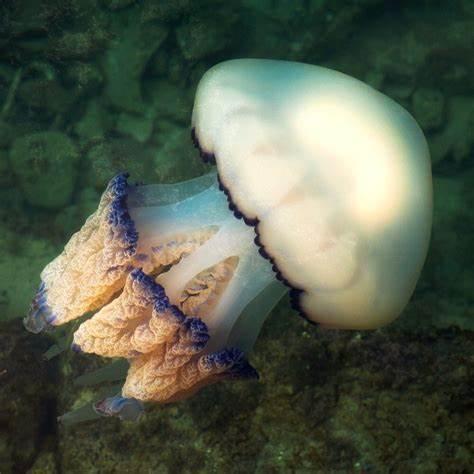
-
Colour: White/Translucent with purple tinged lobes
-
Sting: Causes a mild sting and allergic reaction
-
Other Visual Clues: They do not have tentacles like traditional Jellies but instead trail 8 frilled arms.
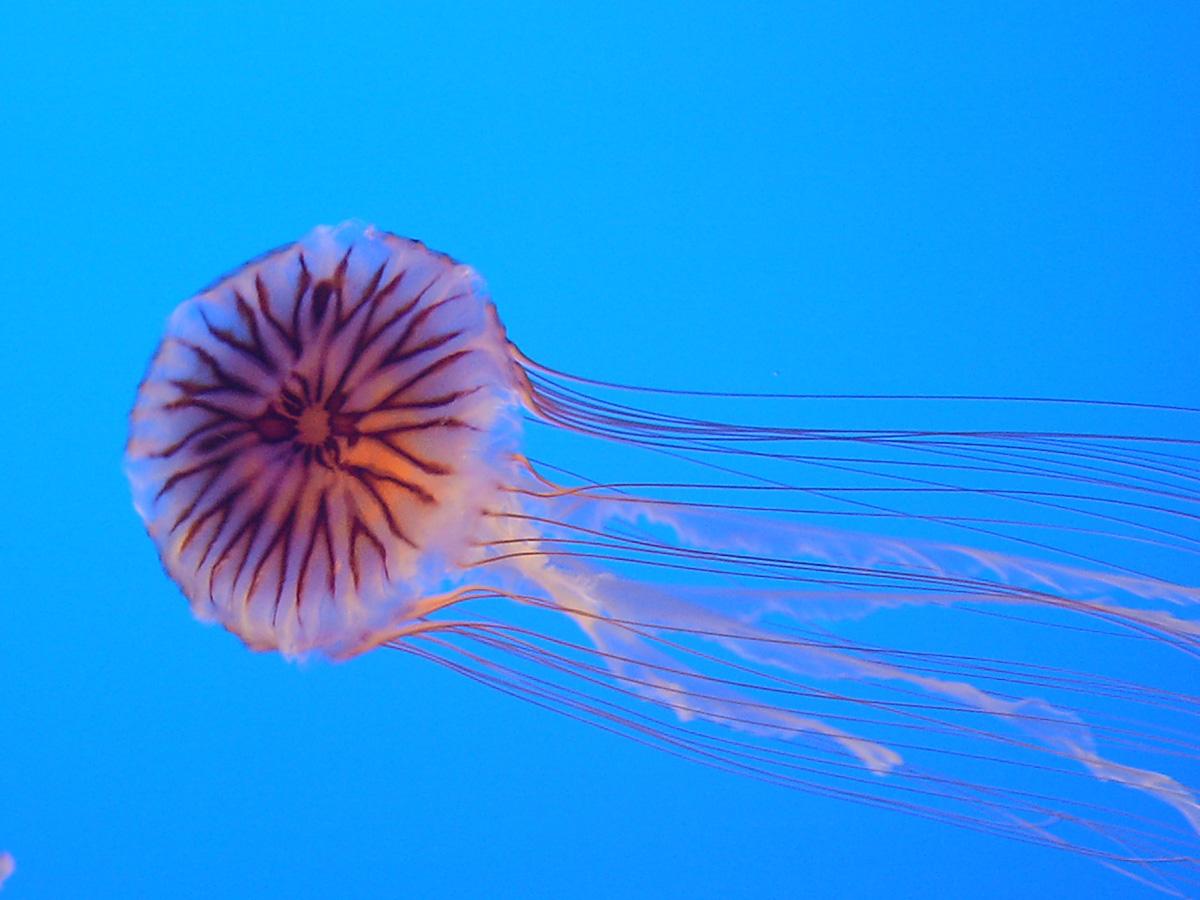
Compass Jellyfish
(Chysaora hysoscella) Swim clear of the compass jellyfish, they can be hard to see and they give a nasty sting. Look for the distinctive markings on top. We’ve noticed a lot of these in the bay!
-
Colour: Yellow or white with distinctive brown ‘V’ shapes radiating like compass lines from the centre
-
Sting: Nasty, moderate to severe stings
-
Other Visual Clues: 24 short tentacles on the edge of the bell and 4 trailing arms.
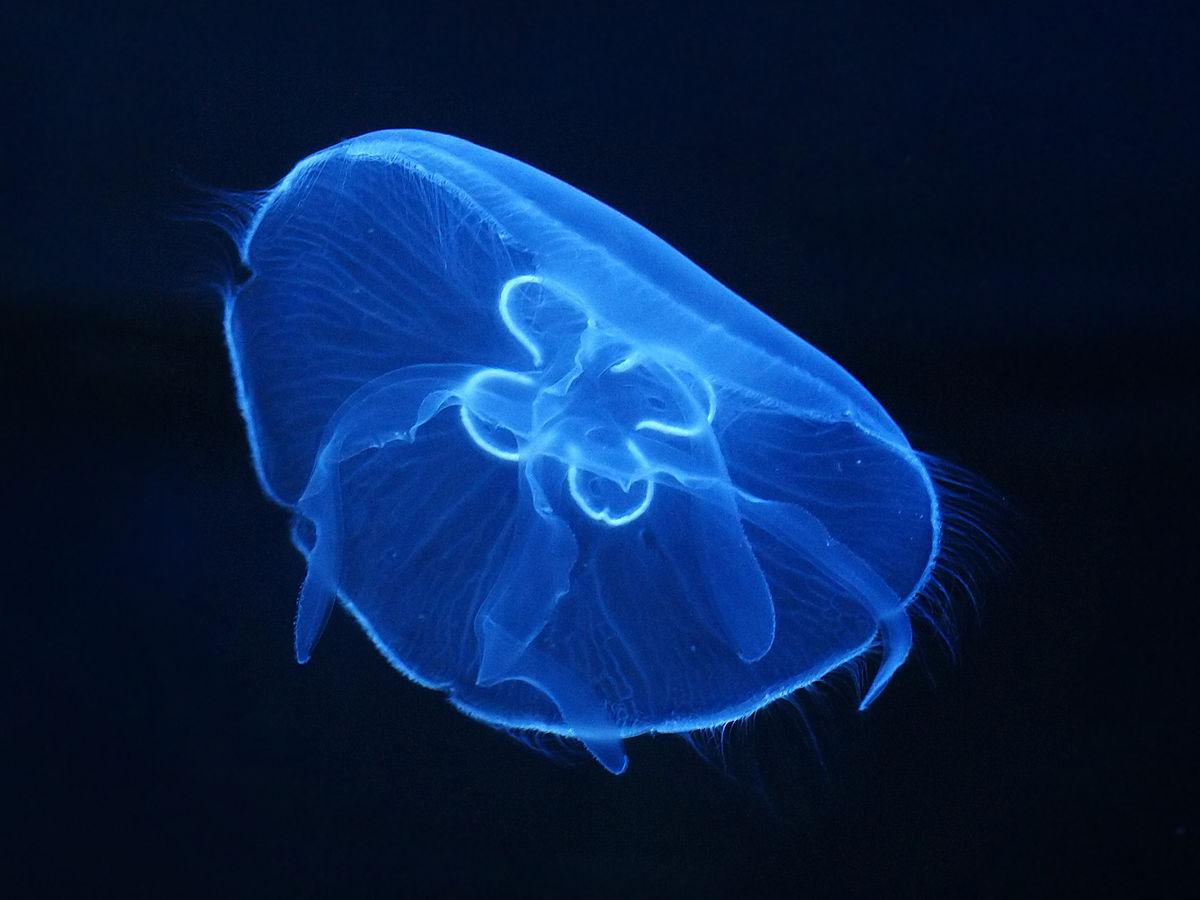
(Aurelia aurita) Moon jellyfish are just mesmerising, with a lovely Latin name to boot.
-
Colour: Totally transparent
-
Sting: They do but only a mild one!
-
Other Visual Clues: Obvious rings in the centre of the dome usually 4 arranged like a clover leaf. These are white or can be coloured.

Crystal Jellyfish
(Aequorea sp.) Soo pretty, and clear like their crystal namesake. A lucky spot if you do see one.
-
Colour: Crystal clear.
-
Sting: Yes, but only a little one.
-
Other Visual Clues: Lots of fine lines radiating from the centre, and lots of small tentacles from the dome, no arms at all.
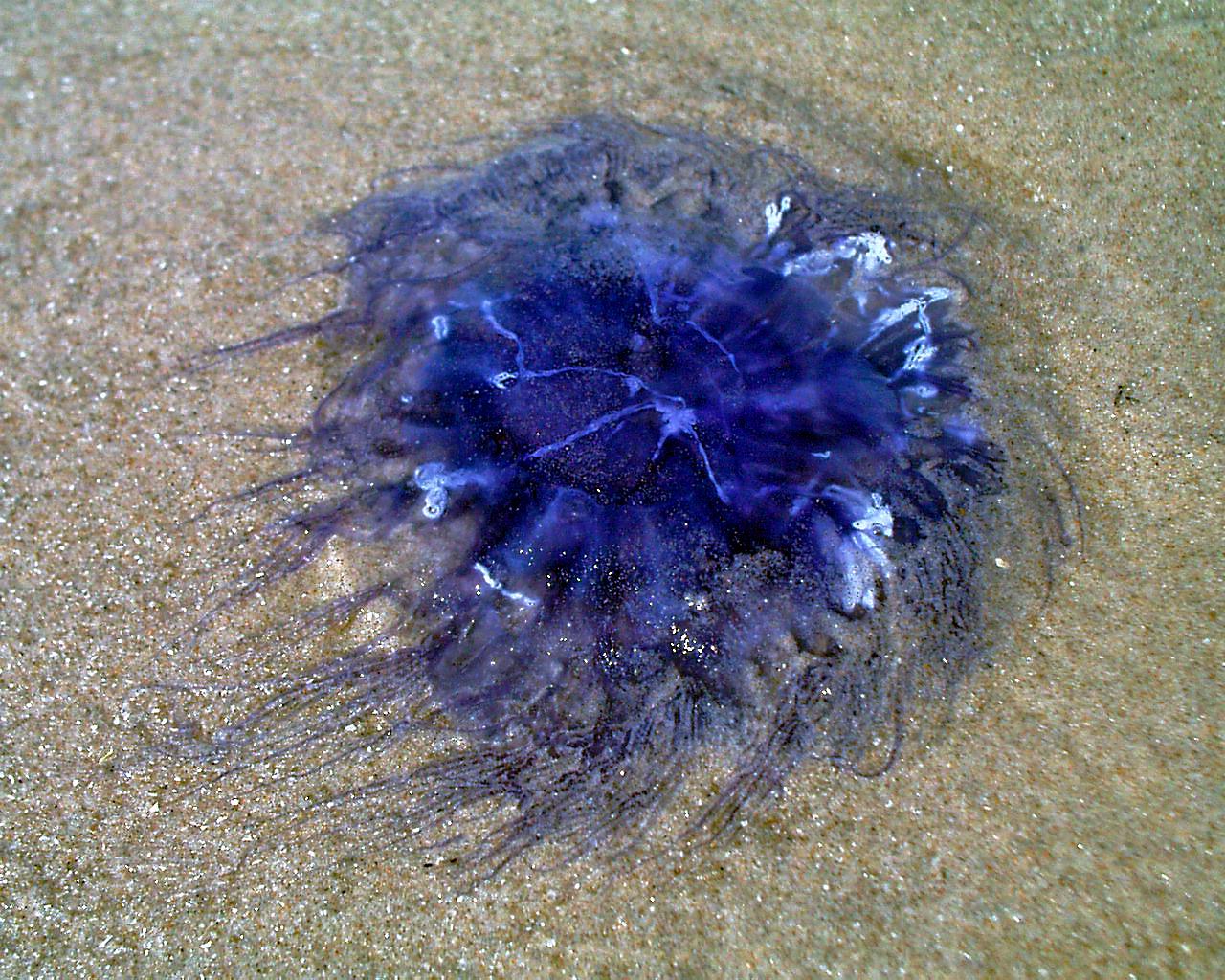
Blue / Bluefire Jellyfish
(Cyanea Lamarckii) Another one we’ve ticked off the HomeintheBay spotting list, these are bright blue and look ruffled in the water, very pretty but a nasty sting, swim well clear! It’s known as Bluefire for a reason!
-
Colour: Blue and Translucent (young ones might have blue, yellow and brownish colouring)
-
Sting: Yes, moderate to severe depending on the person.
-
Other Visual Clues: Many tentacles which give a fluffy or ruffled appearance from the surface.
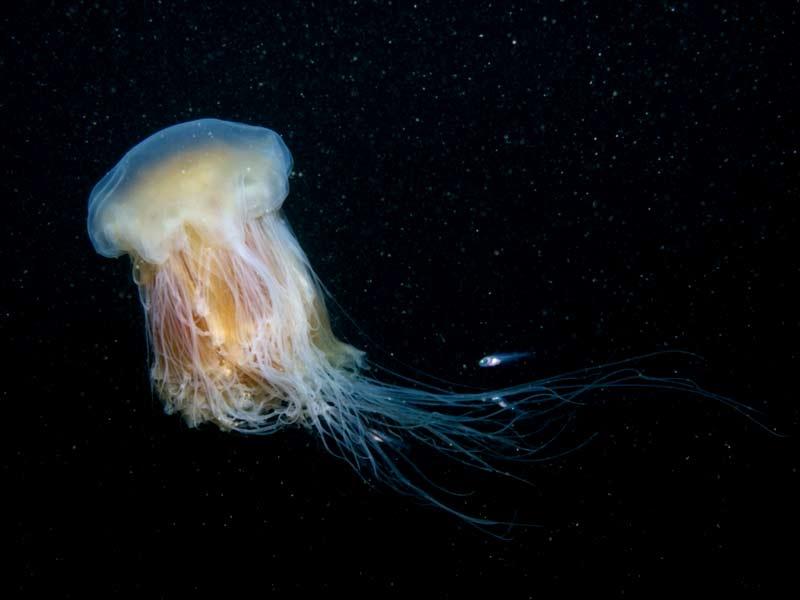
Lion’s Mane Jellyfish
(Cyanea capillata) Now here’s one you might have heard of. Also called, a giant jelly or hair jelly. These can grow up to a huge 2m, we’re yet to see one, but they have been regularly spotted in the English channel so you never know!
-
Colour: Adults are reddy brown in colour and younger creatures are more yellowy brown and white.
-
Sting: BAD – Very BAD
-
Other Visual Clues: Large mass of firey looking tentacles, like a lion’s mane!
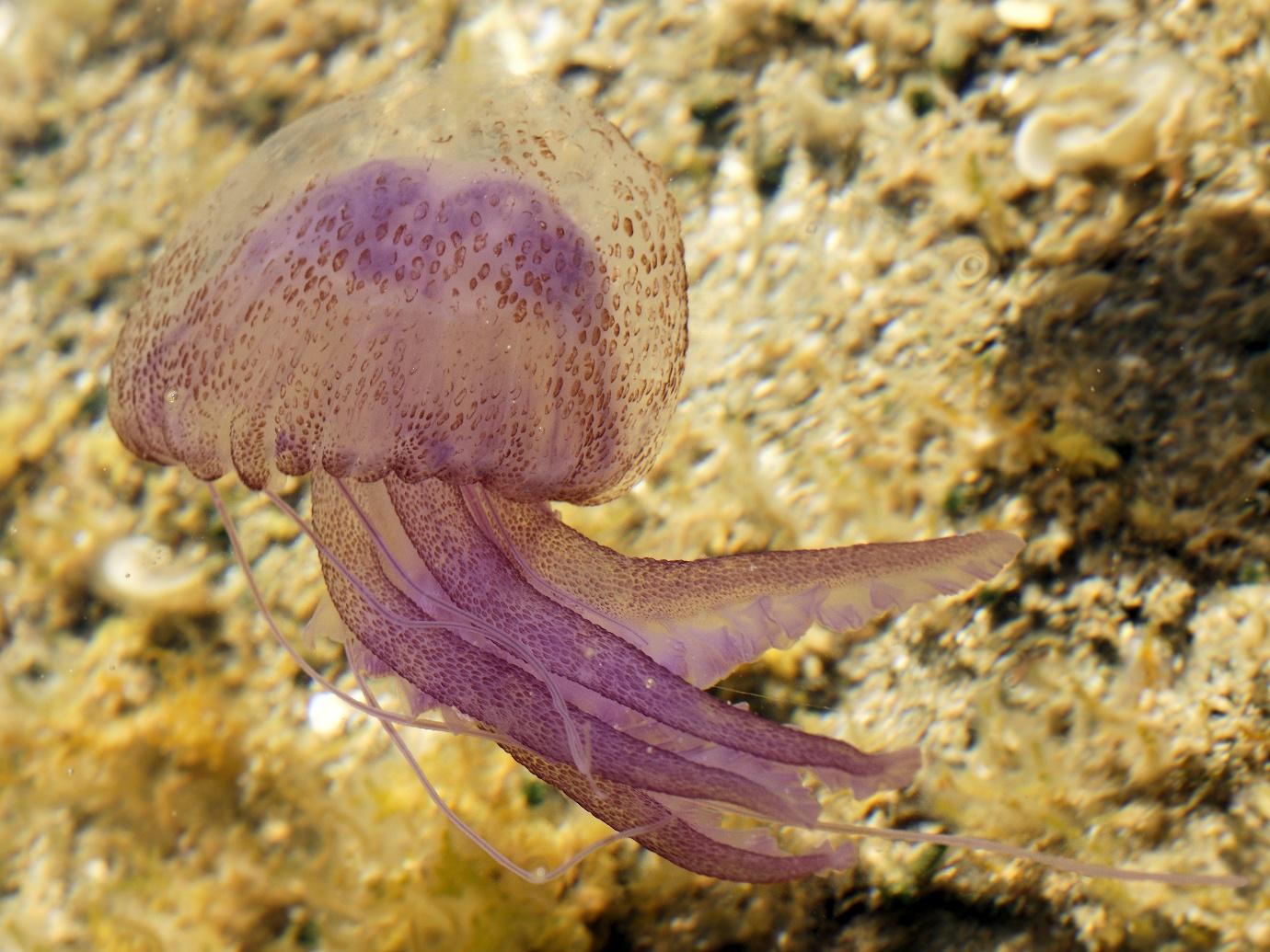
Purple or Mauve Stinger
(Pelagia noctiluca) They are fairly small, and bioluminescent (glow in the dark!), they glow in little flashes caused by turbulent water. They cause quite a severe sting which can make someone nauseous. More unusual in UK waters but one to really watch out for.
-
Colour: Pinky Purple Red
-
Sting: Yes causes pain for 1-2 weeks! Swelling and rash, can cause vomiting and dizziness too, yuck!
-
Other visual clues: Bumpy surface and 8 tentacles.
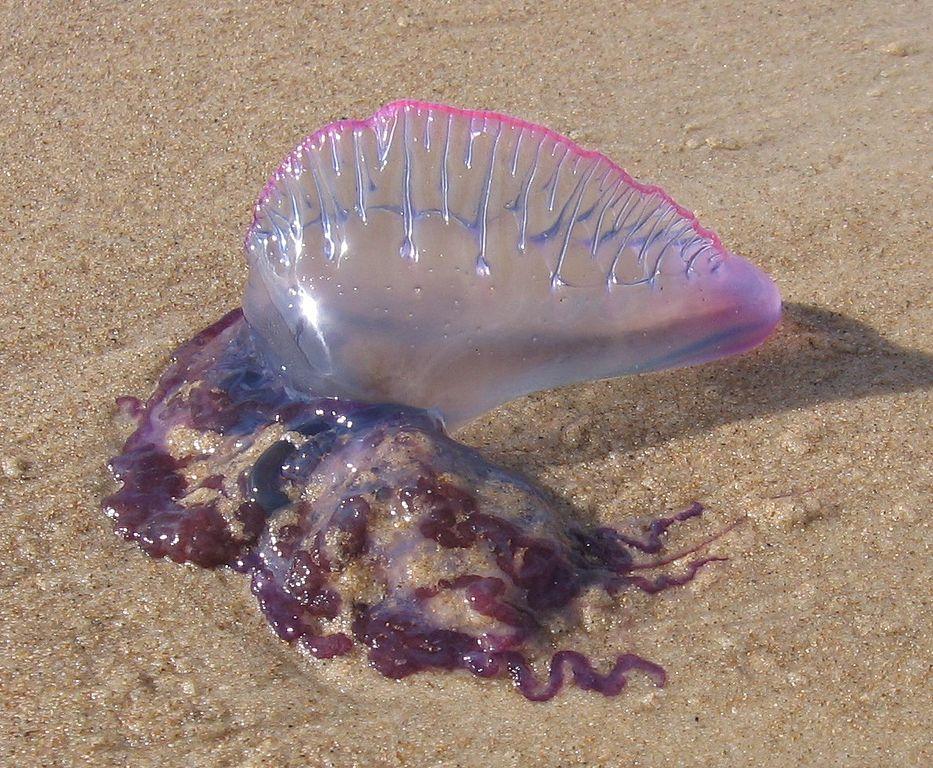
Portuguese Man O’War
(Physalia physalis) If you see this very pretty sail floating towards you on the surface….swim the other way! This unusal jelly delivers a real sting and has been known in extreme cases to cause violent allergic reactions and even death in humans. Usually found in warm water, but ours are warming up, and they have been spotted around south and west coasts in the summer.
-
Colour: Gas filled sail on top of the water is blue to clear with pink or purple edges
-
Sting: Horrendous
-
Other Visual Clues: colony under the float is purple of blue, very long thin tentacles deliver the sting and are can be hard to see.
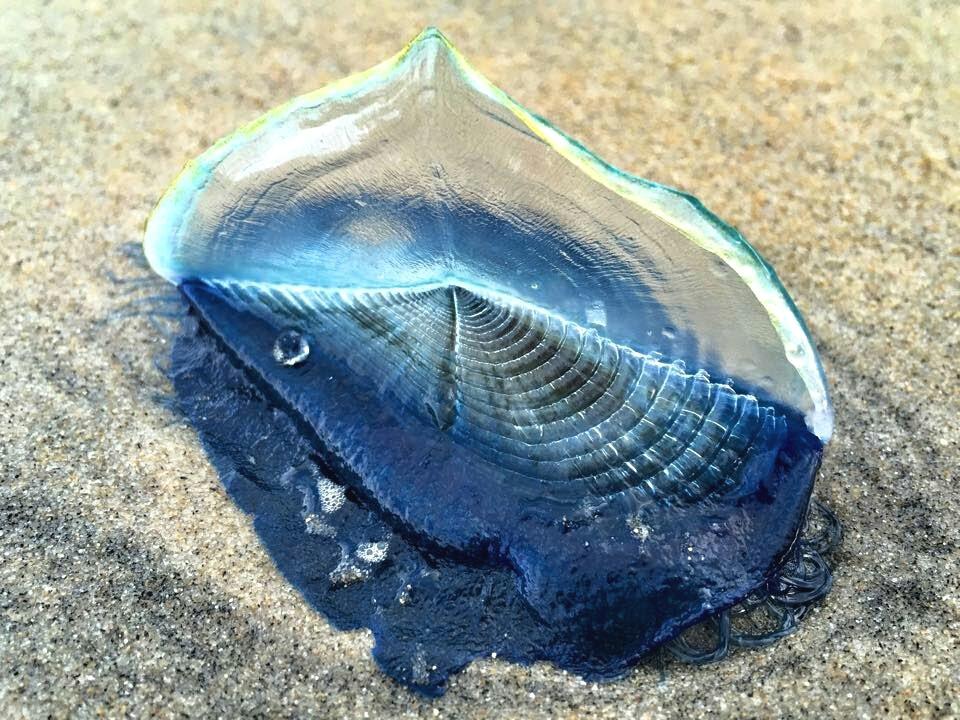
By The Wind Sailor Jellyfish
(Vellela vellela) A surface creature much like above, the Vellela is usually found in warmer climates but moves with the wind and current so can end up anywhere. Very small and very blue, delivers a tiny sting. Great to know if any spotted by you all!
-
Colour: Transparent and blue
-
Sting: Only a small one
-
Other Visual Clues, and oval disk like a fish scale on the surface with a skirt of tentacles underneath.
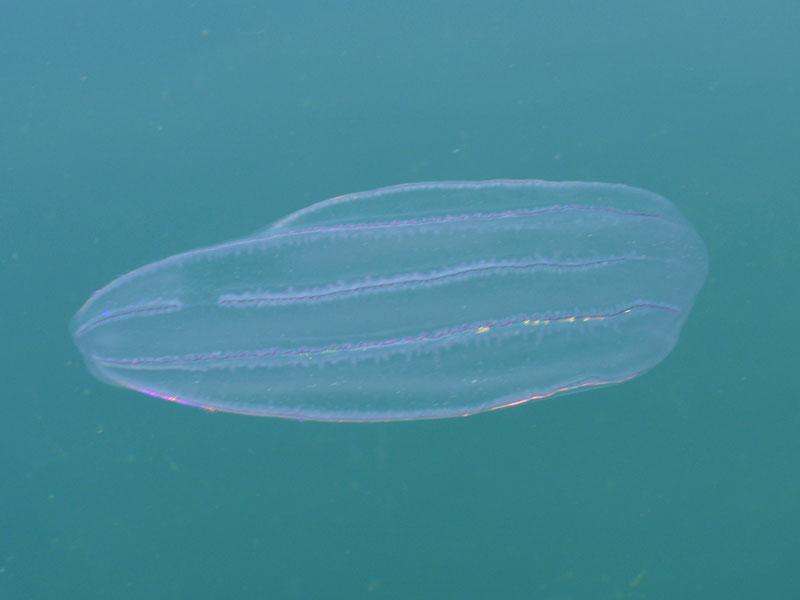
Comb Jelly
(Beroe cucumis) Not technically a jellyfish, but there are many types of comb jellies that can be found in the UK usually small and have a bloated oblong shape like a transparent courgette.
-
Colour: Transparent or white
-
Stings: No, not at all
-
Other Visual Clues: just like a floating bulb really, some species have combed edges or very short tentacles too.
What do I do if I am stung by a jellyfish?
Okay, so DONT PEE ON IT! If in the water and you know jellys are around consider wearing a full length wetsuit. Please do not let dogs eat any stranded on the beach. In a first instance, get help from a lifeguard or someone with first aid training. and take a quick look below is the official NHS advice on what to if stung by a jellyfish.
DO
-
Rinse off the affected area with seawater, don’t use fresh water
-
Try to remove any spines from the skin using tweezers or the edge of a bank card sometimes works.
-
Soak the affected area in very warm water (as hot as you can tolerate) for at least 30 minutes – use hot flannels or hot towels if you cannot soak it
-
Do take painkillers like paracetamol or ibuprofen as per packet instruction.
DON’T
-
Do not use vinegar
-
Do not pee on the sting
-
Do not apply ice or a cold pack
-
Do not touch any spines with your bare hands
-
Do not cover or close the wound
Go to minor injuries if….
-
you have severe pain that is not going away
-
you have been stung on your face or on your genitals
-
you have been stung by a stingray
Go to A&E or call 999 if after a sting you have…
-
Difficulty breathing
-
Chest pain
-
Fits or seizures
-
Severe swelling around the affected area
-
Severe bleeding
-
Vomiting
-
Lightheadedness or loss of consciousness
We want you to all enjoy the diverse sea life found in our waters, and jellyfish are beautiful to observe and can be done so safely by keeping your distance and understanding the species you are observing.
This guide was created with help from the Jellyfish species guide from Seadream Education. From their South Devon Jellyfish Species Survey. Seadream are a wonderful non-profit organisation based in Devon, doing great work to spread knowledge and understanding of the watery world around us.
Help them understand more, if you spot one of these species, send all recorded sightings you can to sea@seadreameducation.com or put on the South Devon Jellyfish Survey facebook page.

